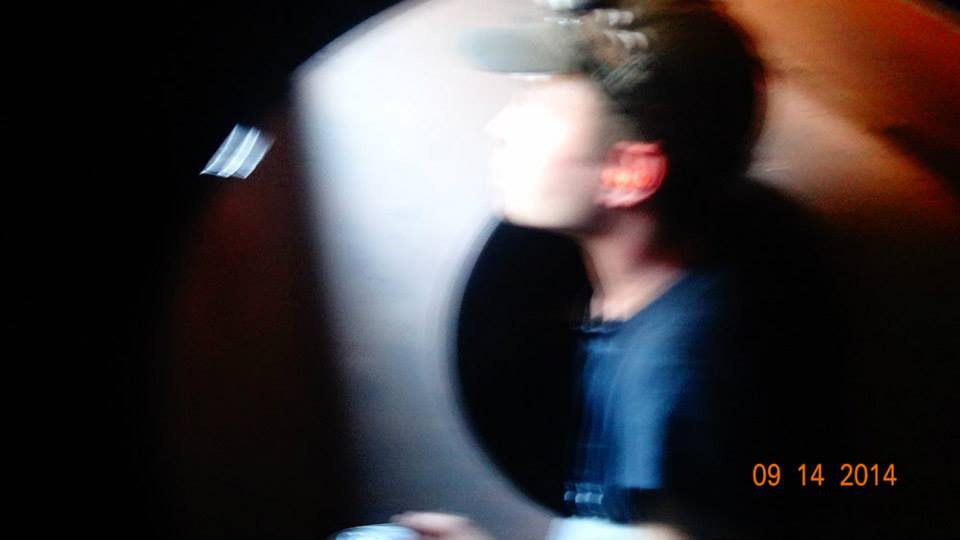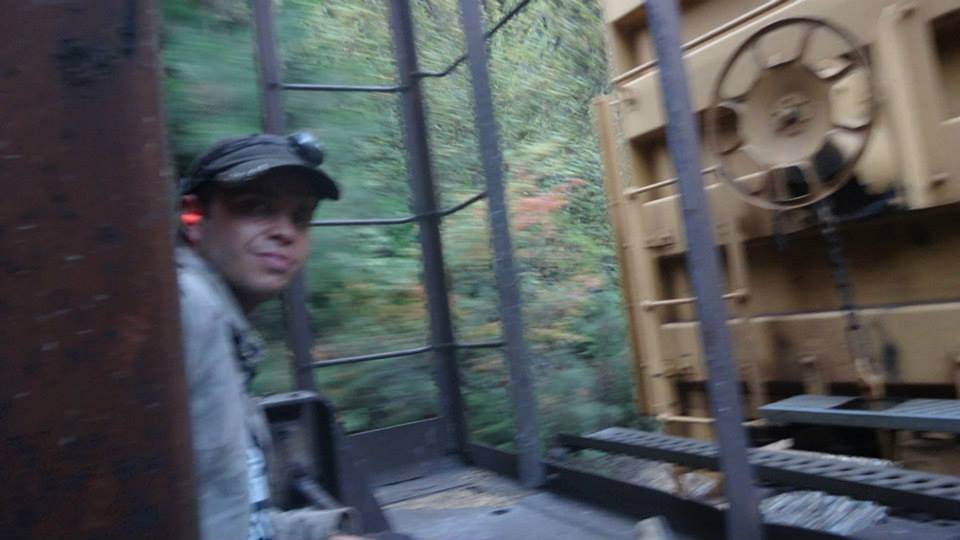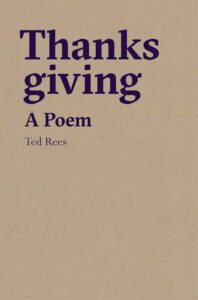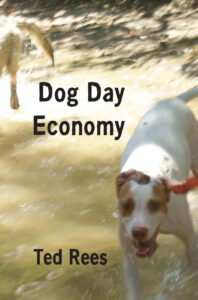
This essay was first made available last month, exclusively for our Patreon supporters. If you want to support Full Stop’s original literary criticism, please consider becoming a Patreon supporter.
Adventure is not dead. Physical exploration of unfamiliar terrain, with all its inherent risks, can seed metaphysical excursions, and remarkable poetry sometimes does result. It’s too easy, from the comfort of home, to label a traveler a tourist—though such identities can overlap. Yet the poet-traveler who thrills to danger, and thrusts their fragile body upon the highway of crime, pestilence, accident, and poverty, may win experiences and sensations that by their very definition are inaccessible to those who choose to stay at home. Scolds may mock poet-adventurers as class double-agents, neo-colonialists, uninvited crusaders, or down-dressing slummers—but sticks and stones may break poet-travelers’ bones, while homebodies, more often than not, go relatively unscathed.
Let’s take a few examples.
As a Columbia undergraduate, Allen Ginsberg drew a penis and some obscenities in the dust of his dorm-room window. Inflamed by the sight of this prank, a dean barged in to find Ginsberg in bed with Jack Kerouac, both half-naked. Expelled, Ginsberg signed onto the merchant marine, joined Kerouac and Neal Cassady for sprees across the US and into Mexico, and sailed for Dakar. Although Ginsberg eventually did earn his Columbia diploma (1948, A- average), he also went on to visit every state in the union—and most every continent in the world. Are these journeys incidental to Ginsberg’s poetic achievement? Of course not.
Elizabeth Bishop (Vassar 1934) is sometimes mistaken for prim and staid in comparison to her Beat contemporaries, such as Ginsberg or Joanne Kyger. Yet she was fierce in her life and work, and anything but a prig. Bishop husbanded a modest inheritance to voyage to Haiti, Mexico, France, Spain, Italy, and Morocco. She bivouacked in New York City and Key West, took a steamer up the Amazon, and eventually settled in Brazil, outside Rio. Could Bishop have written her greatest collections, Questions of Travel (1965) and Geography III (1976), without the sensibilities, and sense-data, cultivated on her many trips? The books’ titles suggest otherwise.
Poets do not have to make travel a central theme of their work to be shaped by their peregrinations. Think of Leslie Scalapino in Tibet, Bhutan, Japan, India, Mongolia, Yemen, and Libya; Joanne Kyger in Japan and India; Amiri Baraka in Cuba: Each returned a different writer. More recently, consider CAConrad car-camping in dozens of Wal-Mart parking lots, or Paul Chan serving as a human shield in Iraq during the 2003 US invasion—only two current artists who have made arduous trekking central to their practices. Travel is one thing legends may be made of, and all poets concoct origin stories, by one method or another.
Enter Ted Rees, who invites readers to adventure in a despoiled world:
Go to trackside, go to the rez beyond blackjack, go to Ghosttown west or Ghosttown east, go to north Yuma, figure Sandtown, or most of the town surrounding Hamtramck, go anywhere. Just don’t attempt to track a buffalo, or navigate by the heavens, or cup your hands in any streambeds. Depredation omnidirectional, invisible digits trash heuristics, cataclysm’s open road and burnt rubber one long drift across the continent, though it will not get peoples’ asses into theater seats.
(In Brazen Fontanelle Aflame)

Rees has experienced such stuff first-hand, and that is part of his appeal. You too can visit the indigenous remnant of colonial genocide (“the rez”), the factory town hollowed out and left for dead by capital (“Ghosttown west or Ghosttown east”), the desert lettuce-basket facing down crippling drought (“north Yuma”), the Christian settlements ringing the nation’s only majority-Muslim city (“the town surrounding Hamtramck”). But don’t expect to encounter the standbys of movie Westerns. There are no wild buffalo left to track. Smog and light pollution render the stars almost useless for triangulation. Pellets of poison are flooding the waters. If you dare venture, Rees will tell you what you’ll find, and it’s trashed. Like Walt Whitman, but without the faith in progress, he will “stop somewhere waiting for you.” Like Huck Finn, but without the guile, Rees has “been there before.”
But where, in fact, has Rees been?
Born 1984 in Philadelphia, Rees grew up in the city’s middle-class suburbs. As a child, he often visited Center City to spend time with extended family, wander museums, and hungrily absorb “weird stuff,” such as punk music and radical politics (and radically political punk music). Both of his parents (a lawyer and an advertiser) suffered health scares and major illnesses that sometimes required Rees to stay with grandparents or friends. His father and mother, however, did much to nurture Rees’s early interests in art, literature, and music.
Rees is an only child, a circumstance which led him to develop the “inner resources,” he says, “to be alone . . . very, very well,” with an intense mindfulness quite evident in his poetry. In middle school, which he terms “a terrible period for everyone pretty much,” Rees stood out “as a fat, obviously gay kid who was really into books and weird music.” One favorite read was Jean Craighead George’s 1959 YA novel My Side of the Mountain, the survivalist tale of a Manhattan runaway who, along with his pet falcon Frightful, lives off the land in the Catskills.
Rees attended high school at Germantown Friends, a private Quaker academy where he sometimes stood at meeting to offer spoken ministry. After college at Oberlin, Rees moved to California and earned an MFA in poetry, in 2008, from the California College of the Arts (thesis committee: Dodie Bellamy, Kevin Killian, and Lisa Robertson). Shortly thereafter, Rees was fired from a job. Stymied by the economic downturn, angered by the Bay Area’s economic disparities, and in an attempt “to live without working, as much as possible,” Rees set out “to dwell in kind of an otherwise, in a space that’s more interstitial, that has more to offer”—the anarchic, liminal space of exquisite trash, eccentric outsiders, and relative misrule.
For a number of years in the 2010s, Rees and his boyfriend (now husband) “caught out” on freight-trains and rode the rails, crashed in squats, camped in cars, made alliances in tent cities, carried out various “hustles” (including part-time work in a luxury boutique), hung around alternative gathering-places such as West Oakland’s “Dirt Mound,” toiled on Humboldt County weed farms, purchased a leaky U-Haul truck and made a home of it, and struggled for subsistence in the Mount Shasta foothills, among other exploits.
Rees gathered enough material, via such explorations, for a shelf of memoirs and auto-poetry. But he chose a less obvious path. While his poems, especially those in his first collection, In Brazen Fontanelle Aflame (2018), traffic in impressions gleaned from shoestring escapades, Rees is more closely concerned with ways in which being out of doors, yet still caught in the maw of predatory capital, may warp, disperse, or reshape identity:
The raucous fiddle of the cingulate cortex is muted by attrition war
with cash’s monotones.
I sit on the bench and observe the frame
collecting leaves are posing for a mood
and the breakage dwelling within it.
(IBFA)
A pre-installed point of perspective (“the bench”) enables some recognition of the conceptual boundaries of current poetry (“the frame / collecting leaves are posing”—with the dead leaves coming after Whitman’s punning use of the word, to suggest quires). But poetry’s ground cover (bestrewn with poems past and present) may distract from the new by offering sentiments enterable, but ultimately unlivable. Worse, the “raucous fiddle” of that part of the brain which seeks risk and reward may be smothered by an oppressive felt demand for money and security—capitalism’s core indices of happiness.
For a poet seeking to break the fences demarking landscaped and signposted poetic territory, the life of a boxcar-hopping hobo must be a great lure. Not least, the exposure of the (already societally endangered) queer body to the physical and psychic risks of adventure travel might appear to offer a more intensely felt brush with the “real” than does suburban life. While it seems to me that wild exploits are not in any significant way more “real” than, say, backyard gardening, they do endow a sense of fearlessness and bring with them a train of memorable sense-data.
In poetry that approaches offhand recklessness in its chaotic energy, Rees sets forth vivid cameos captured in transit:
discarded mattresses like sentries to a complacency extant so long / as rambling is negated, scoping new interstices to shack into (IBFA)
when we gather round the fire barrels / and our emotional viscosities foam on shoals (IBFA)
The railroad chugs through / Chetopa, a single tear / American built, // engorged, fatuous, / I swallowed that melody, / glum harmonica (Thanksgiving)
children stuck in pens, rivers / rising, tent cities // kaleidoscoping (Thanksgiving)
He slept in haze in a lean-to behind pylons / and was thus insulated (Dog Day Economy)

Rees is to be commended for the daring that helped him seize these visions, but with the intrepid daring of such travels can come (and Rees is not alone among adventuresome poets in this respect) a touch of over-proud scorn for fellow poets who don’t take similar risks, as seen in such barbed lines as: “Children stuck in pens / under a freeway. Two weeks / pass, it’s a bar lounge // and some poets sip / Manhattans and slap themselves / on the backs, so brave” (Thanksgiving).
Rees would attach himself to a line of queer forebears who exposed themselves (literally and figuratively) to danger: sexy St. Sebastian bound to a tree and pierced with cruel darts (“he was as full of arrows as an urchin is full of pricks,” per The Golden Legend); Rimbaud scorned and spat upon, and worse, by soldiers (“When they’ve shot their wads: / I’ll retch to see my heart / Trampled by these clods,” he lamented); and David Wojnarowicz tripping solo into danger zones (“Every time I walked down the street or got out of my car I thought of a body stripped of flesh turning slowly on the end of a rope”).

Intense fascination with such dramatic, abject bodily risk is a through-line in Rees’s collections, from In Brazen Fontanelle Aflame, to Thanksgiving (2020), to his latest, Dog Day Economy (2022). Along the way, Rees gradually has tempered a landscape poetry of irruptive, elemental, despoiled “reality” with a burgeoning, canny apperception of how the real and the synthetic are inextricably interwoven, a non-binary only ever seen and negotiated by a human “I” who crosses and contaminates the human-mediated world as it is perceived, anywhere. If Jackson Pollock could declare “I am nature,” Rees might propose, after Rimbaud, I is desolation. By desolation, here, I mean humanity amid ruination, artifice amid fructification—which is everywhere observable at this late date, though is, perhaps, especially in plain view among the interstitial waste locales Rees has toured.
This allover imbrication of skin and infrastructure, decay and artifice, comes into focus in one of the most plangent lyrics in Dog Day Economy:
Cocktail in Styrofoam and tulips on the promenade,
I face a trial but the bridge has been replaced
so my tendency toward kissy really blade
there on the stub’s blankness under highway felching
sweetly it neighed in anticipation that
this is a sound stage
slick in a pinafore
concocted fessing in the holly grove:
a really, really inadequate eco-poem
developing then lunch in the ditch facsimile.
State office park the wind tonight,
charity milk dangerous revel soil nude
occult ceremony robe fitting.
From this poem’s first phrase—“Cocktail in Styrofoam”—artificial intoxication and (punningly) sodomy are captured by Styrofoam, perhaps the most artificial and non-biodegradable consumer substance of them all, and juxtaposed with another emblem of combined humanity and nature, the much-engineered, hybridized bulbs that shoot blooms along the way. The speaker goes on to test and revise sexual identities: Is he a sentimental kisser or a dashing, rakish gay “blade?” In either case, he finds himself sucking semen out of an anus (“felching”) under an overpass. It all begins to feel unreal, artificially produced (“this is a sound stage”) or somehow copied from nature (“in the ditch facsimile”). Rees goes meta, questioning if this is “a really, really inadequate eco-poem,” a showy move that suggests, perhaps, some irritation at being labeled an eco-poet (as Rees has been identified by certain critics and anthologists).
But this is not to overlook the boisterous humor here and in much of Rees’s work. Awkward sexual gymnastics in view of the highway, the incongruity of a “State office park” (certainly no Arcadia), the joy in filth (“revel soil nude”), and the workaday tailoring of a frock for a supernatural rite (“occult ceremony robe fitting”) that doubles, in fact, as another self-judgment: this absurdity, obscenity, bafflement is somehow “fitting” for the poet-character as decked out in this poem. It is just this kind of self-reflexive self-mockery that saves so much of Rees’s work from sanctimony and tendentiousness. You might laugh out loud; I did once or twice.
Dog Day Economy is really an omnibus containing two manuscripts: Economy, A Reshaped Spit and Dog Day Scrolls. According to a note at the back of the collection, the first was
composed by writing with and around language that was physically cut and pasted from issues of
The Economist magazine and Wikipedia articles on people who have disappeared mysteriously
with special attention given to those who seem to have disappeared voluntarily.
It is the connective “glue” fixing the source-texts to the page, along with the meanings that may be read across the montage, that makes these collage poems work. Nevertheless, the sources are intriguing. On the one hand, we have the official bulletin of libertarian neoliberal capital accumulation, and, on the other hand, questionably sourced tales of folks who went “off the grid.” Rees goes for broke, disjunctively mashing phrases, but nonetheless keeping the verse legible, in a mostly linear fashion—looking for freedom amid a lust for adventure and a lust for lust.
An important predecessor here is artist and author Seth Price, whose 2008 artist’s book How to Disappear in America was collaged from countercultural handbooks for going off the grid, evading police capture or, more generally, walking out of one’s life. Price, much more so than Rees, draws attention to ways in which such strategies, in an age of highly sophisticated surveillance (of governmental, corporate, consumer varieties), are naïve and perhaps often doomed to failure. Price quotes, for example, such web-sourced, harebrained advice as:
“Contact these people through their web site to find out more about working with assisting in herding sheep”
“Dropping your opposition’s firearms into a postal box will effectively transfer ownership
to the police and de-claw your opposition greatly”
“[H]ave a good story to tell about calling a friend to come pick you up in a few days”
Excerpting from such advice for escape, all to be found on the internet, Price implicitly highlights how fanciful such aims have become, now that owning a phone means one is geolocatable, stoplights contain cameras, and some businesses no longer accept cash.
Hoboing was already outmoded, of course, when Woody Guthrie, born and raised middle-class, published his great boxcar memoir Bound for Glory in 1943. Yet Rees still holds a great stake in the remnants of freewheeling subcultures, including “riding the rails.” This grand romance underlies the earnest romanticism of his poems—which at times can cloy, or even lead the critical reader to beg, “Where is irony to be found here?” Fortunately, Rees does at times check himself with a self-critical eye for the absurd, with a canny awareness that his adventuresomeness is partly underwritten by privilege:
They tried me with their books and I wept
and returned sleeping on a picnic table,
some naive composition, carpeted walls.
What is more, Rees’s celebratory, erotic braggadocio is tempered, at times, by a clear-eyed awareness of how corny it all can get. Per Dog Day Economy, for instance:
singed pubes on stove
dependency my morning chuckle. (88)
slick with grime in love
with itself and your ass
scooching its mouth glad
to feel similarly in sun. (97)
I find yes I find deep jollity in retroflection
kick me to the curb, de-ribbon my nog-nog
and spike me to what is always the literary present,
so that this cramped whinny shows I am attempting
forceful turning, asking where I slather,
where I shame myself, where can pollen suck at me denying
all my calls and other coupons. (53)
At a recent reading in Brooklyn, Rees performed a new poem about his experience undergoing the at-times anonymizing ordeal of intensive oncological treatment while fighting and surviving colorectal cancer. During the reading, Rees stripped to a black Speedo, lay supine on the bookstore garden’s ground, where he had carefully spread a clean bedsheet, and, raising his legs and ass in the air, cried out wittily about anal probes and doctor jibes. This was just one more example of how Rees attempts to put his life, body, and poetry on the line. Yet, upon reflection, I had to wonder if this uninhibited, dramatic performance distracted too much from the heartfelt complaints and insights conveyed by the lyrics. To judge from the audience’s response, Rees’s bare physique, prominently tattooed with Wojnarowicz’s iconic Rimbaud stencil, stole the show.
Rees’s unembarrassed courage and his sense of adventure are, finally, a convincing part of the legend he continues to build, and do inform a compelling appreciation of his books. Vagabondage, thrill-seeking, and risk underwrite the best of these poems—and knowledge of Rees’s adventures only makes the best of his work resonate more strongly. If there is a sense in which Rees can claim no special bravery by comparison with poets more compelled by metaphysical risks, the loud, proud, companionable voice in Dog Day Economy and Rees’s other books offers readers an unusually wild entertainment: “to emulsify / jargon into a poison / brand of canned chip dip,” as he self-teasingly puts it in Thanksgiving (a wonderfully funny book). Rees is definitely something else. One is left wondering—and looking forward to—where Ted Rees will go next, in the world and on the page.
Chris Hosea is the author of the poetry collections Put Your Hands In (2014, selected by John Ashbery for the Walt Whitman Award) and Double Zero (2016).
This post may contain affiliate links.







